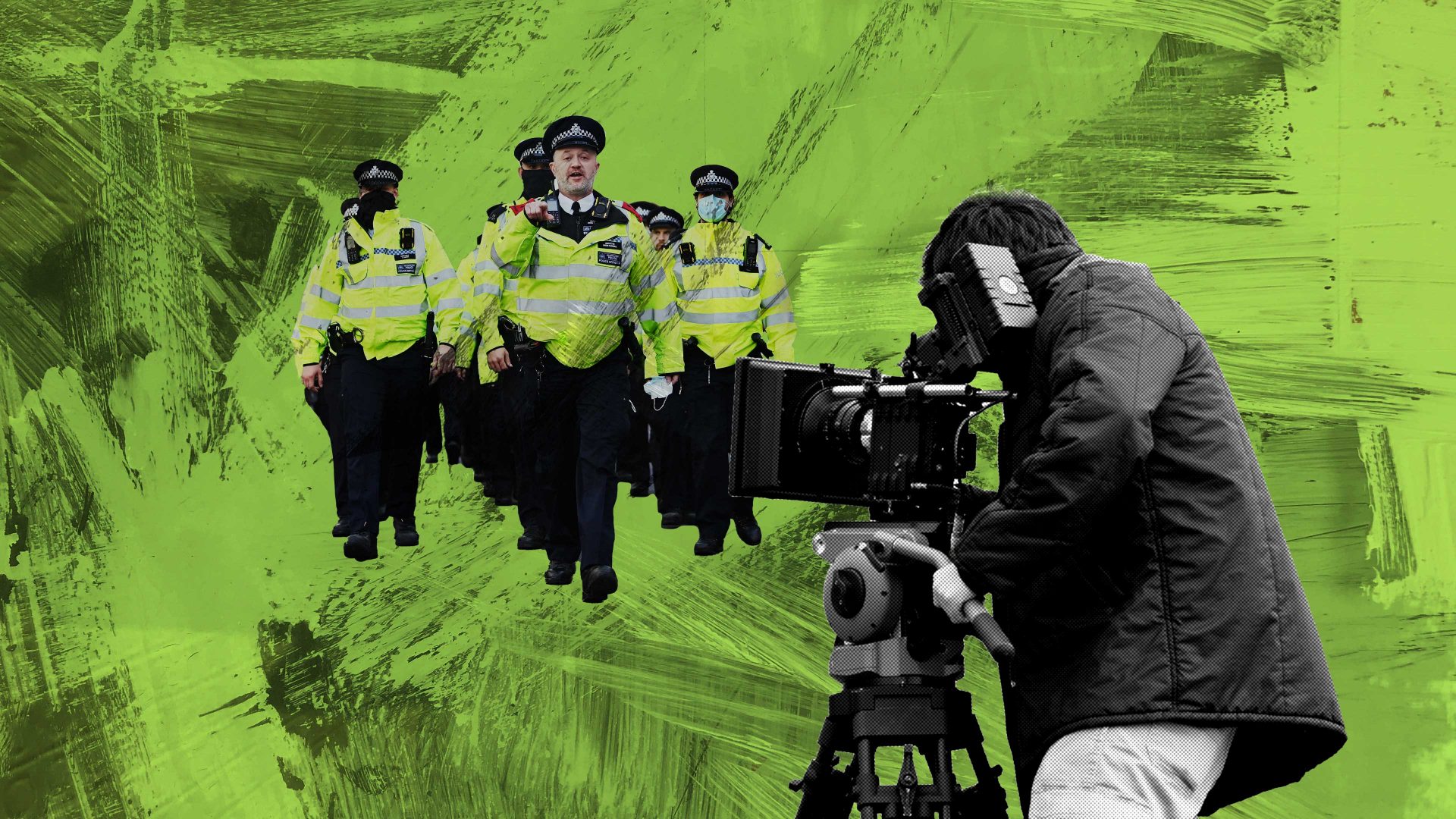It was the great triumph – albeit a posthumous one – of the Swiss-French pioneer of linguistics, Ferdinand de Saussure, to’ve detached the pesky sign from what it signifies. Before him, people obstinately cleaved to the notion that a notion was a notion – after him, they ceased to be sure about anything much at all, and the era of postmodernism was upon us. Now, you’re lucky to come across any sign of culture that bears any relation to what it signifies, given that so very little is held to be… significant.
All week there had been trestle tables set up outside the tube, a fake fruiterers’ stall – complete with real fruit, and fake, fake fruiterers’ grass to display it on – and two very distinctive groups of people milling about. The first all wore puffer jackets, had lanyards and clipboards; the second were, so to speak, professionally nondescript.
On day three I said to one of the younger puffers: “What’re you filming?” And she replied, “Unnamed Police Drama.”
“It’s all unnamed police dramas round these parts, love,” I quipped – but she was already gone.
On day five, I was in a hurry, but noticed they were still at it – and what’s more there were many more extras loitering in the roadway, robbing the Shah’s Halal Food (“Straight from the Streets of New York”) stall of its clientele and blocking the entrance to the station kiosk.
“Blimey, officer!” I expostulated to one of the four or five cops who were loitering in the station hall itself (a not uncommon occurrence), “You can hardly get to the trains ’cause of all the fake commuters out there.”
To which he, of course, replied, “Actually, we’re fake cops.”
I forbore from pointing out to him, that given Jean Charles de Menezes was shot dead by plainclothes police in this very tube station, and Sarah Everard was abducted by another one just up the road, the issue of who the police really are, and what they’re doing, looms large in these parts.
On day six, the homeless woman outside the tube was on page three of Ben Judah’s book This Is London, which I’ve mentioned before in this column: a stand-out account of London’s multiple cultures, that begins with its author sleeping rough with Roma beggars in the subways at Hyde Park Corner. Once again, I restrained myself – but it was hard not to point out to her the oddity of a homeless person in a London tube station reading an account of homeless people in a London tube station.
Anyway, I was late to visit my eldest and his burgeoning family, who’ve just moved to a flat in what used to be called County Kilburn. Used to be, because gone are the days when the Irish immigrant community predominated in these parts, and at any hour of the day or night, you could see some horny-handed son of toil, down on his luck, tearing up his betting slip outside Paddy Power the bookmakers. Nowadays the Kilburn High Road is as diverse as it gets – but on my way from the tube, I was struck by the Tin Tabernacle.
Not the only galvanised iron place of worship in the British Isles (there are over 50), but one of the oldest and most prominent. Built in 1863 as an Episcopalian Church, St James’s was in use until the 1950s, when it was converted into a base for sea cadets. The work involved turning the church’s interior into a scale reconstruction of a ton-class minesweeper.
A pretty radical reconfiguration of signifier and signified – and one I pointed out to the woman from the volunteer group, who showed me round, and who hailed, coincidentally, from Saussure’s hometown, Geneva. But she didn’t seem to think replacing the table of the Lord with an automatic 40mm anti-aircraft cannon capable of firing two, one-kilogram high-explosive shells a second was any big deal.
I asked her how many angels she thought it could bring down during the end of days, but she was more interested in showing me one of the “cabins”, which, in a further bizarre twist of signification, had been used as a repository for a set once used to shoot a scene in a 1964 film about the life and death of Thomas à Becket.
Why the set had ended up in the Tin Tabernacle seemed something of a mystery – Becket was shot at Shepperton – but there it was: a fake altar in a formerly real church now masquerading, sort of, as a minesweeper. It’s a peculiar sort of triumph – and necessarily a posthumous one.



